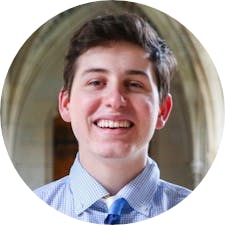Kimberly Hewitt, former vice provost for institutional equity at Johns Hopkins University, assumed the role of vice president for institutional equity at Duke Aug. 5. As the leader of the Office for Institutional Equity (OIE), Hewitt directs the handling of harassment and discrimination complaints and promotes Duke’s diversity and inclusion efforts. She talked to The Chronicle about her transition to Duke and future plans for the OIE. This interview was edited for length and clarity.
The Chronicle: How has the transition been, having not had a lot of time to ease into the role over the summer?
Kimberly Hewitt: It’s good. I was leaving a position at Hopkins, and it’s just kind of the timing of how the process worked and negotiating a time to leave that I started on Aug. 5. I’ve had a lot of time to just meet people and to start to get to know the University. I spent a lot of time with my staff to think about the work we’re doing, and how do we best align our work so we’re maximizing what we’re doing to support the University.
TC: What is the biggest difference between your portfolio at Hopkins and your portfolio at Duke?
KH: My position at Hopkins was purely focused on compliance, so it was evaluating harassment, discrimination, sexual misconduct and related retaliation complaints and then we had ADA [Americans with Disabilities Act] compliance in our office. We didn’t have that connection to diversity and inclusion, which is one of the things that really attracted me to this position. When I started working in higher education, I worked in an office where everything fell under the umbrella of diversity and equity, and I felt that model is more sustainable because the work you do in compliance is informed by how well you understand identity and difference.
TC: Based on what you have learned or gleaned so far, what do you think is the greatest area of weakness for Duke right now in terms of institutional equity?
KH: So I don’t know if I can identify like a singular area of weakness. There are a lot of really great things about Duke that attracted me to coming here. I like the way that this function is structured so that there is both—the compliance area is part of this office as well as those who are doing outreach and education around diversity, equity, inclusion. We’ve been thinking about how to better collaborate inside OIE across the functions, so that we’re collaborating together on education and when we are doing investigations. Those have concluded how other people in the office—who are focused more on training, outreach and coaching—can come in at that point to support and to train together with folks who are working on workforce issues.
So I think there’s a lot of opportunity internally to deepen our collaborations and leverage our resources to help the University advance its goals around equity and diversity and inclusion. That’s one of the great opportunities for OIE.
Across the institution, I think there are a lot of people who are really interested in diversity issues and how do we figure out in this really decentralized place where that work is happening and how to maximize the use of those resources and increase collaboration beyond just in the office. That’s one thing that’s always a challenge in a university like Duke, where people can be operating in silos—how we break through some of that and collaborate more effectively.
TC: After the biostatistics incident last spring, I know Mary Klotman [dean of the School of Medicine] directed OIE to conduct an investigation, and I don’t know if we have heard back about that. Did OIE make any recommendations, and did they have any findings?
KH: This was before my time, and I can’t share very much information at all about a specific investigation. But yes, OIE did an investigation and made some recommendations.
TC: Do you have any initiatives or plans in mind to combat sexual misconduct and sexual harassment on campus?
KH: I’ve spent a lot of my career working on sexual misconduct issues. Mary Pat McMahon [vice president for student affairs] is also entering the University with fresh eyes, so we are definitely going to be working together to think about the sexual misconduct process and support that we have here.
TC: Are there any specific proposals in mind, or is it still kind of on the ground floor?
KH: This is my first month, but I think that both process and prevention are areas that we want to think about best practices or how we are doing at Duke in those areas.
TC: If there were one specific priority that you wanted to accomplish this year, or in the next few years, what would it be?
KH: I think my priority is to really look at the resources in OIE and think about how they’re aligned so that we’re maximizing what we have here. I think it’s always a challenge to help people understand what we do, in particular in the investigation process. I want to spend a lot of time thinking about how we can communicate it and how we can educate the University community about that work.
TC: How can students best take advantage of OIE under you?
KH: I think that is very much a part of our goals around communicating because I think for all of our constituencies—students, staff and faculty—we want people to understand better what it means to come here and report a concern and what happens. We are working on how we communicate about that, so that it’s more clear and less intimidating to people who might have a concern.
Get The Chronicle straight to your inbox
Sign up for our weekly newsletter. Cancel at any time.

Jake Satisky was the Editor-in-Chief for Volume 115 of The Chronicle.

